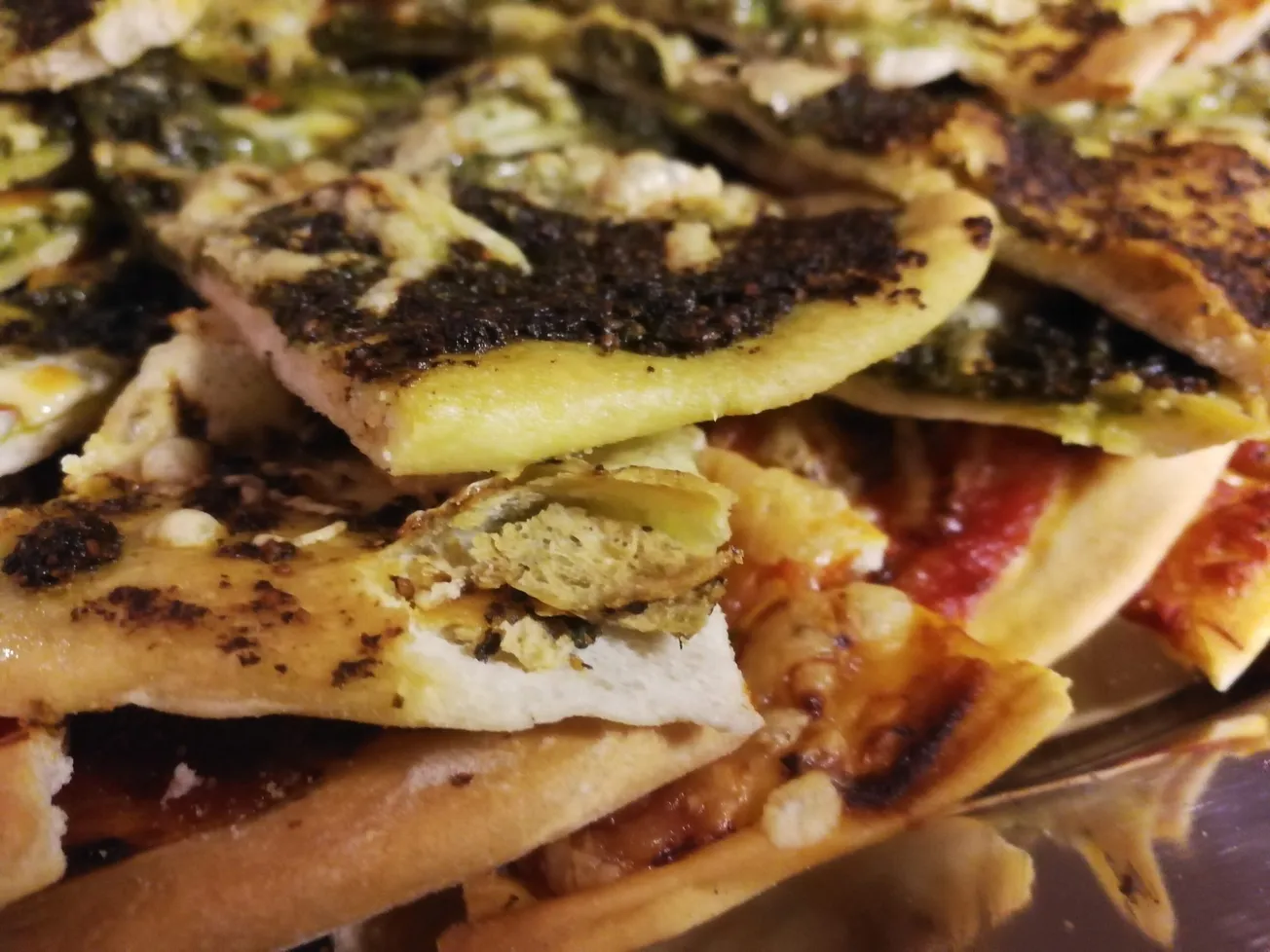Daniel Goldwater
Chef CMRJ and currently acting Chef CMRH
Jerusalem
Israel
Thin Based Pizza and Calzone
Sticking with Italian and adding yeast to the mix takes us to that wonderful world of Italian pizza and its lesser-known sister the calzone.
Pizza as we know it hails from southern Italy with the earliest known references in writings being around the ninth century CE. Before this it was eaten more like a thick focaccia with toppings of olive oil, salt, herbs and sometimes cheeses. Becoming a popular and commercial food in the early nineteenth century, road side pizza carts started popping up around Naples, a sort of early version of today’s street food. From modest roots in Naples the original Neapolitan pizza has been transformed into one of the most popular foods eaten almost everywhere and with any topping imaginable anywhere in the world today.
Pizza like pasta is the carbohydrate on which we emulsify the protein, flavour and razzmatazz that makes a well rounded culinary experience enjoyable, memorable and nutritious.
I haven’t said much about calzone. Calzone is a folded over pizza with the filling inside instead of on top. I find the calzone to be more a knife, fork, bottle and cork type of meal. It has to be feasted on in situ and can’t be eaten on a piece of cardboard or on the run. Calzone is also a product of southern Italy, also credited to Naples with many variations and fillings from all over the toe and heel of the Italian boot. The dough of the calzone is the same as the pizza; the filling is much the same, but as it is on the inside it remains more molten and liquid.
Baking a pizza, calzone or focaccia on a pizza stone in your home oven makes all the difference to the experience as it allows that real crispy crust of the thin based Italian pizza to materialise, due to the intense heat being radiated out of the stone. If you can lay your hands on one, please do. We purchased our pizza stone at a supermarket in Grey Lynn, Auckland, about seventeen years ago, it has served us well and is still going strong.
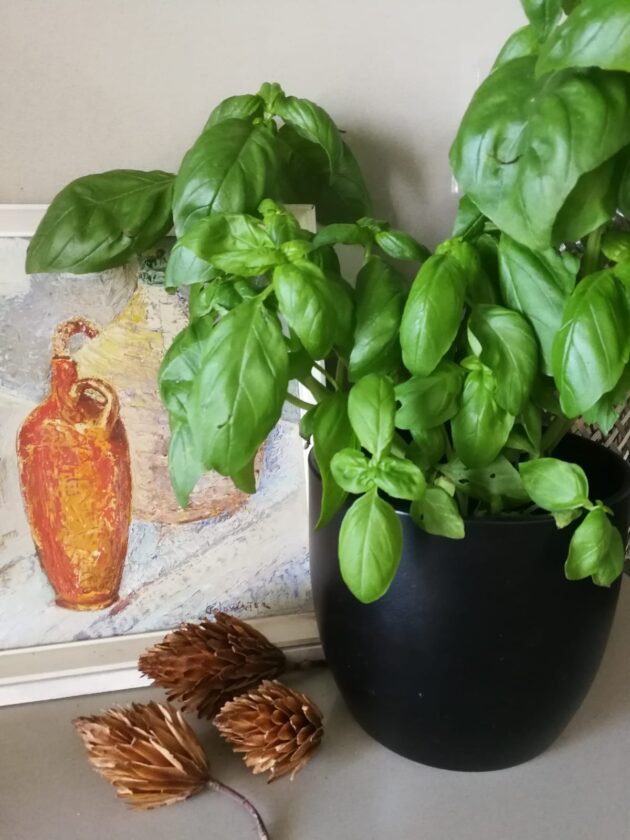
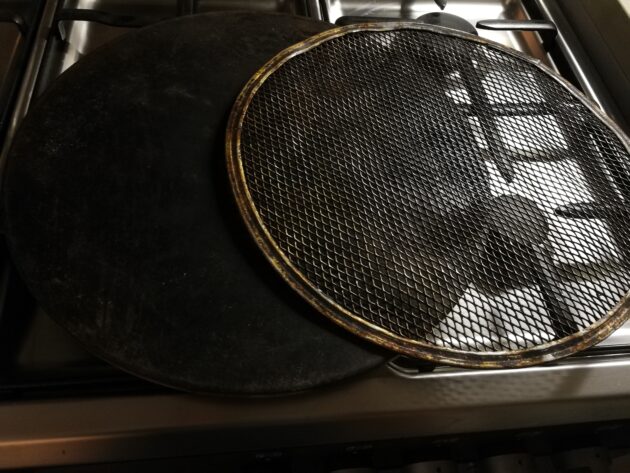
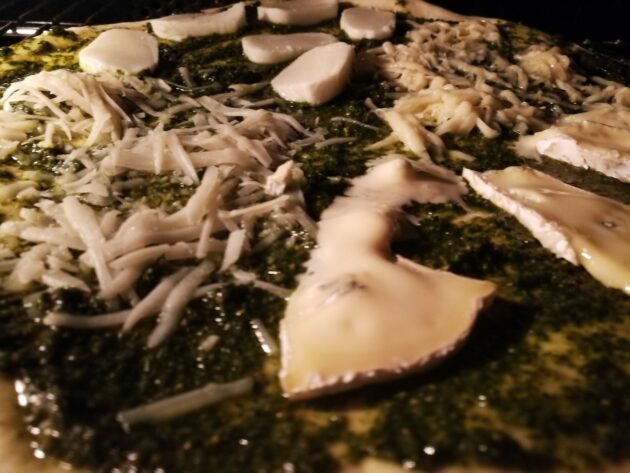
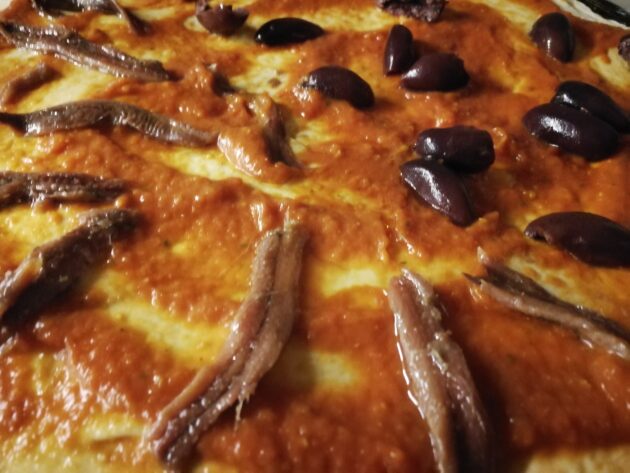
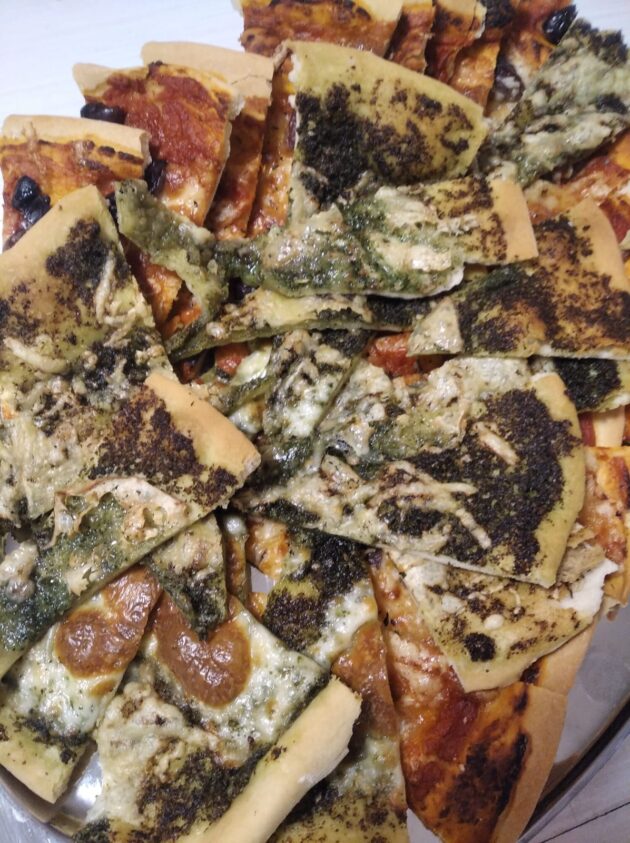
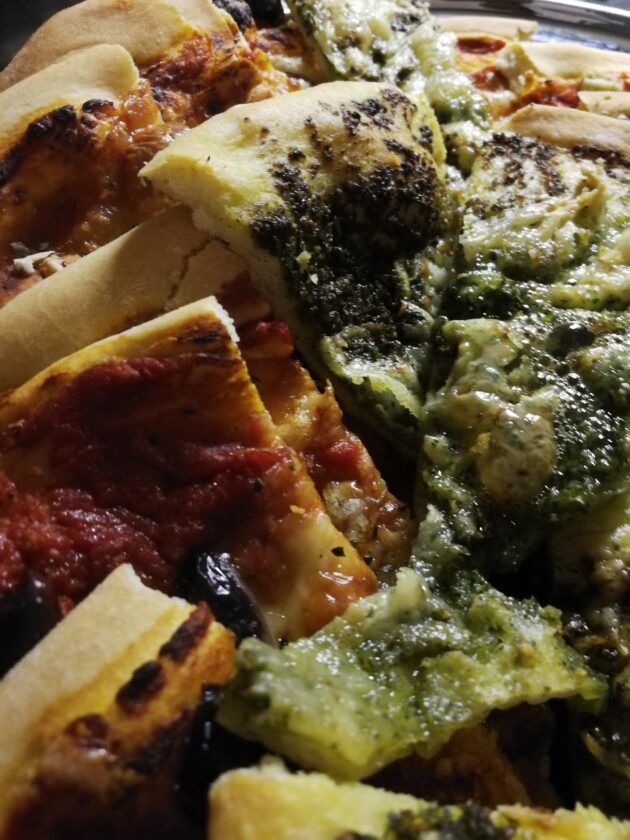
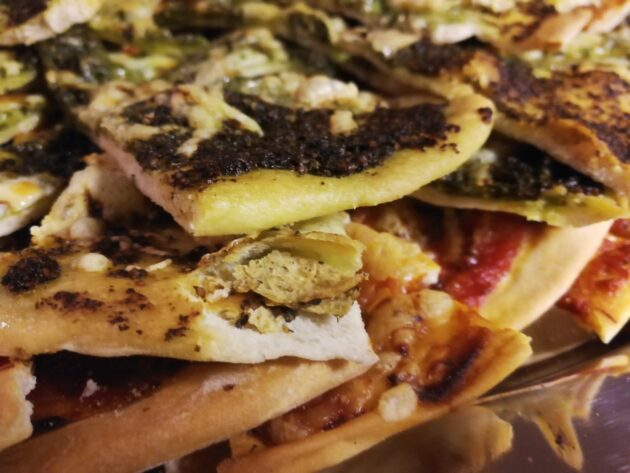
Photo credit The BFD
Pizza Dough Recipe
Ingredients: will make 3 medium size pizza or calzone balls.
- Flour 360 gram
- Dry yeast 6 gram
- Salt 5 gram
- Olive oil 33 gram
- Water 250 gram
Method:
Put dry ingredients into the mixer, mix with a hook for a couple of minutes. Add water and oil that have been mixed together in three parts. Once they’ve been added, let the dough mix on low to medium speed for at least 8 minutes.
Remove using flour-dusted hands if necessary and roll into a tight ball. Return to mixing bowl and leave to rise until it doubles in size.
Remove and divide into three equal parts, roll into three separate tight balls, place on flour-dusted baking paper and return to fridge for several hours.
When needed, use a rolling pin and flour to ensure it doesn’t stick. Roll out as thin as you like. Place on pizza net if you have one, or on baking paper on an oven tray if you don’t, and apply sauce and then topping.
Into oven at 220 C: should take about 15-17 minutes.
Pizza Sauce:
Ingredients:
- Tomato Pulpa x 1 400 gram can
- Tomato Paste x 100 gram
- Onion x 1/2 diced finely
- Garlic teeth crushed x 3
- Fresh Basil Leaves Cut roughly(handful)
- Tablespoon of balsamic vinegar x 1.5
- Water 1/3 cup
- Salt & pepper
Method:
Olive oil in pan, when hot add onion and toss for 2 minutes, drop the temperature to medium, add two crushed garlic teeth, toss 1 minute, add tomato pulp, paste and water, mix two minutes, add balsamic vinegar and basil, cook for five more minutes on medium low.
At the very end add a couple of pinches of salt and a couple of grinds of pepper, reduce a little bit more than the pasta sauce before adding the last crushed garlic tooth, grind with hand held blender until smooth, and it’s ready.
Basil Pesto:
Pesto topped pizza is especially scrumptious. Personally I prefer it to tomato topped pizza. Making pesto is easy and takes only a few minutes if you have a functioning food processor.
Ingredients:
- Fresh basil x 2 large fistfuls of basil — about 6-8 of those supermarket basil packets.
- Pine nuts x 2 handfuls
- Grated parmesan x 2 handfuls
- Peeled teeth of garlic x 6
- Olive oil usually around 250-350 ml
- Salt and pepper, 2 small pinches of each
Method:
Pluck basil from the stalk, soak/wash well in cold water, dry and place in food processor, add pine nuts, parmesan, garlic, salt and pepper.
Add a little olive oil, turn on food processor and drizzle in the olive oil in a fine constant stream, the sound will change when its ready.
If you want a rougher, less ground version of pesto, use the pulse function as you drizzle the oil in.
Cheeses:
Cheeses are as important as the dough and the sauce, giving another layer of flavour, adding the protein and acting as a binding agent bringing and holding everything together. The main cheeses I use in both pizza and calzone are a mixture of one third grated parmesan, one third mozzarella and one third a regular yellow cheese. Of course you can jazz it up with feta, blue cheese or camembert if your heart desires.
Toppings:
Really what you desire or in modern lingo what turns you on. Anchovies, olives, mushrooms, onions……. Dah de dah. The traditional florentina pizza has spinach and an egg in its centre, so really whatever and wherever you want to go.
Making a pizza or putting everything together is simple really. Dust the surface you are going to open the pizza dough on, dust the top of the dough and start rolling. Make sure the surfaces of both sides of the dough are dusted all the time. The dough should easily open up to a thickness of several millimetres. Roll both ways to create a circular shape if you want a round pizza.
If you have a pizza pan, dust the surface with flour, place the dough carefully on the pan and stretch it to the edges. Using a dessert spoon, spread the sauce starting in the middle and working your way out.
Leave a centimetre of dough around the edges of the pizza, put on the desired topping then the desired cheese. The pizza oven should be very hot, 220-250 Celsius for about 17 minutes. I bake for 10 minutes then carefully move the pizza from the pizza pan to sitting directly on the stone for the final 7 minutes. This creates a super crispy crust. It is also when one burns arms and fingers, something which goes with the territory of being a pizza man/person type.
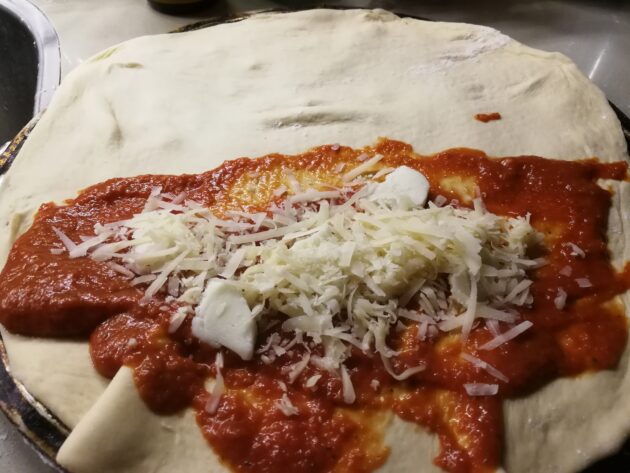
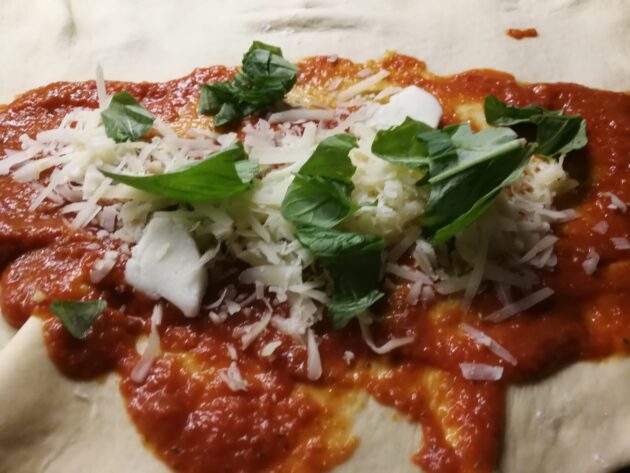
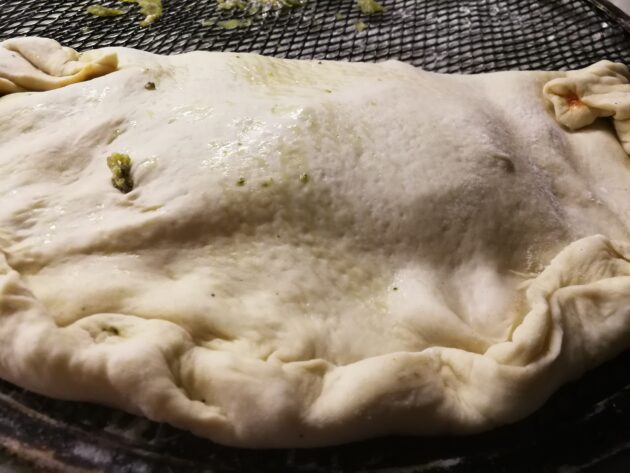
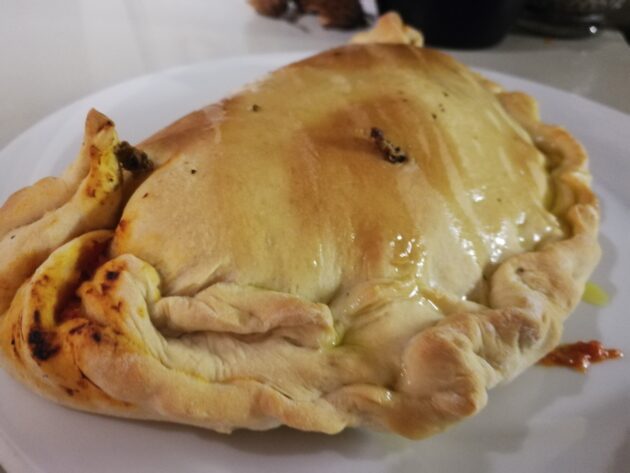
Photo credit The BFD
Calzone:
The Calzone is a closed pizza. Filling on one half of the rolled out pizza dough, Cheese of choice and fold it over and seal the edges by pressing and folding.
Bake in the oven for the same amount of time as the pizza. When out of the oven dribble a little olive oil of the top surface. Call it a samosa or a big bourekas or an Italian Cornish pasty, that’s the sum of a calzone. It’s tasty and oozy and well worth a go.
The calzone assembly process is much the same as the pizza. Once the opened dough is on the pizza pan, spread topping of choice on one half of pizza only, fold over and seal the edges. Cooking time is much the same, but don’t try to move the calzone halfway through directly onto the stone unless you are super experienced as it will likely end up a bubbling molten mess.
All of this savoury feasting demands a cherry to top it all off, so I think a dolce (dessert) is well in order. Next week we shall assemble two very traditional but easy Italian desserts, tiramisu (a real one) and the panna cotta. Can’t wait. Arrivederci

